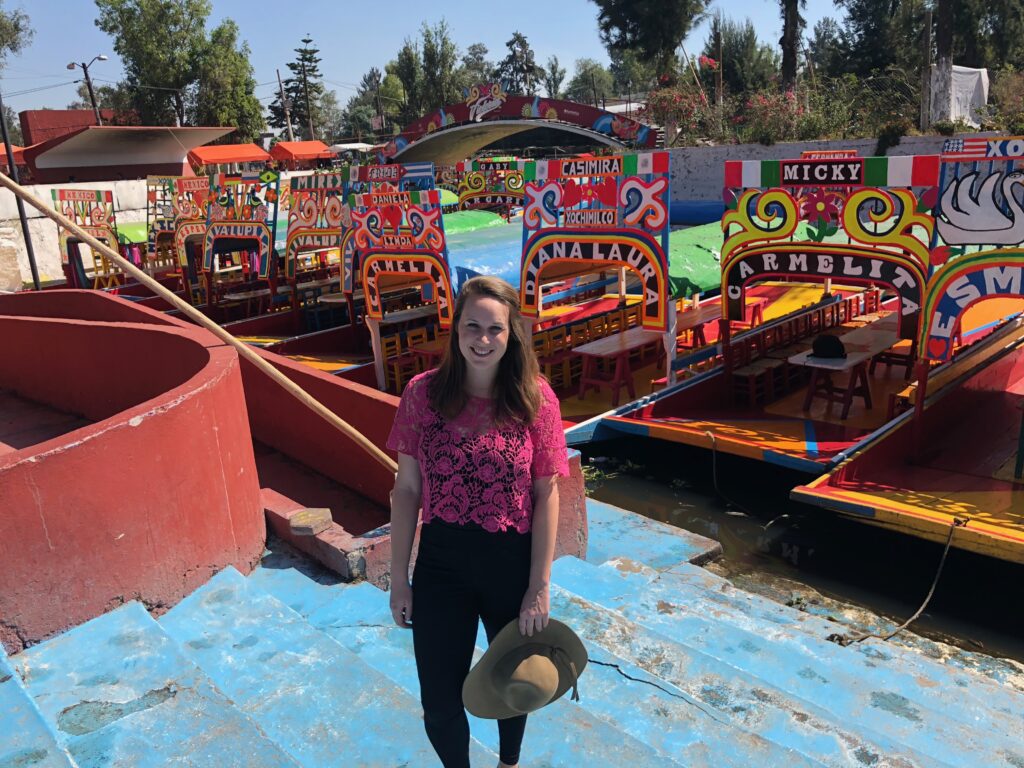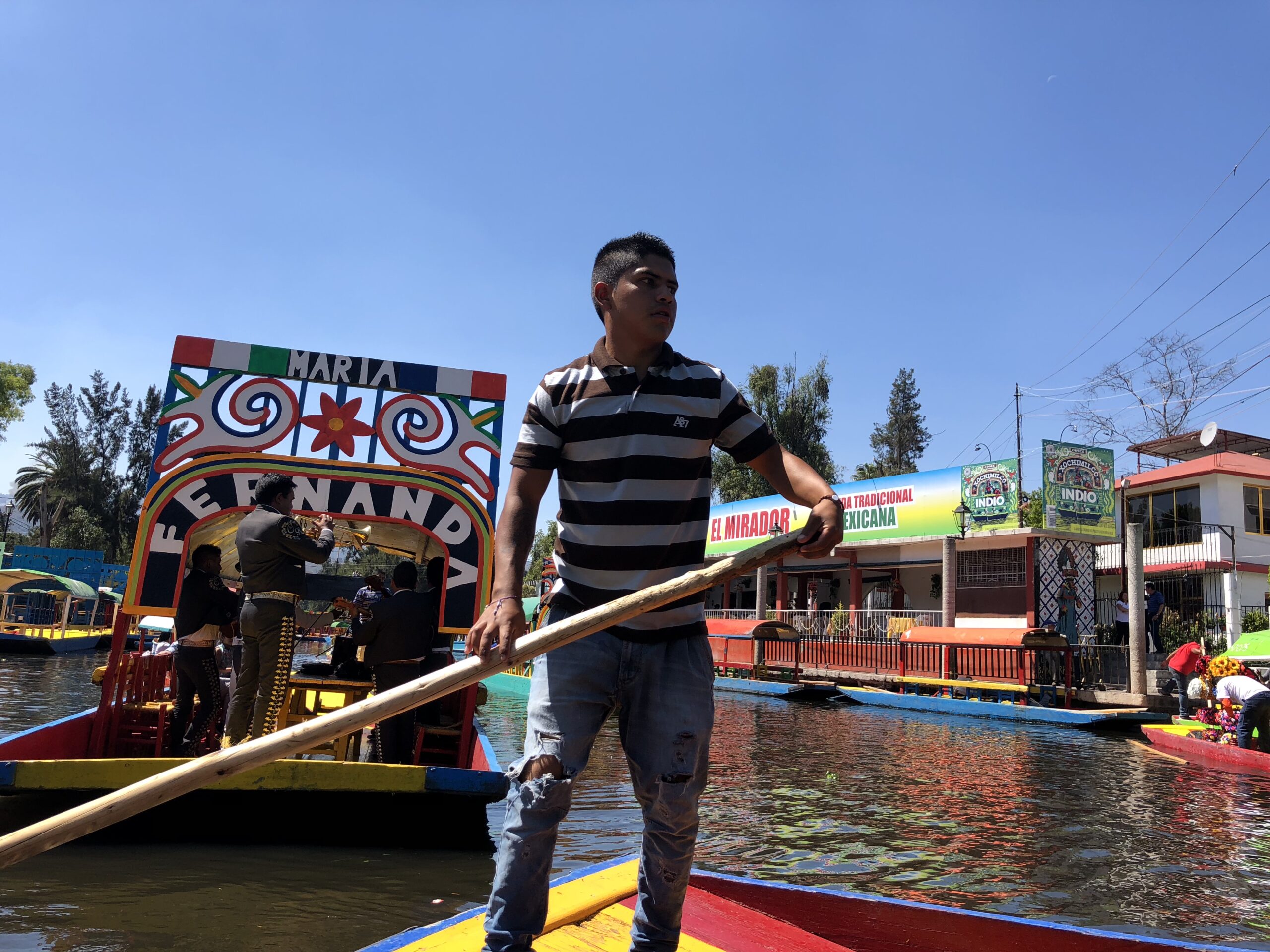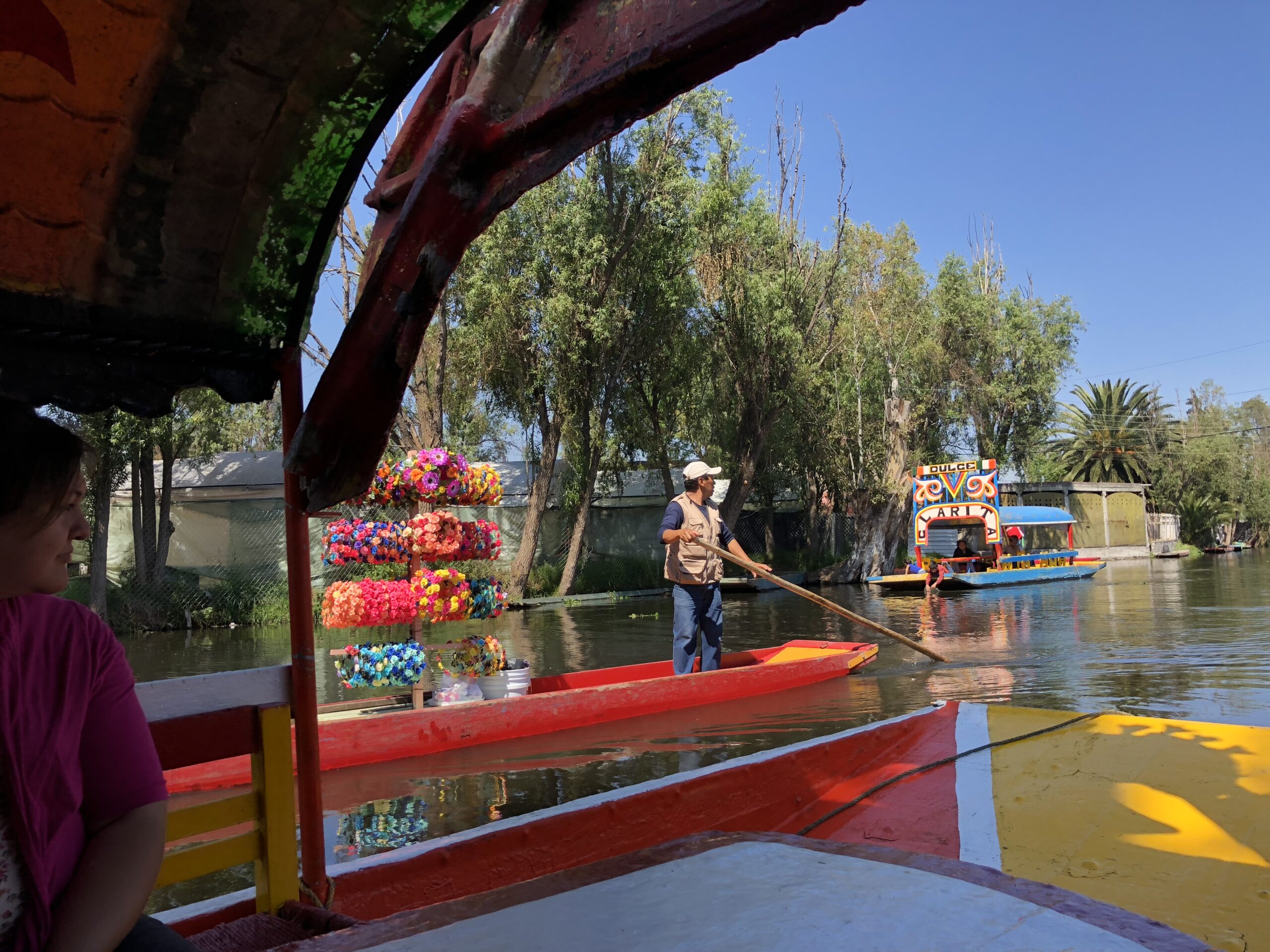
Crowned with Flowers in Xochimilco, Mexico City’s Floating Gardens
“Corona o Tecate?”
It’s a picturesque question to be asked as I step aboard the deck of a brightly colored trajinera in Xochimilco. The gritty docks of this small and unassuming neighborhood in southern Mexico City unfold into a sea of narrow and long boats, each crowned with painted flowers, giving the landscape the appearance of a floating garden. The vintage look of the trajineras, coupled with the fact that we are drifting on the remaining canals of an ancient waterway system built by the Aztecs, makes for an otherworldly atmosphere.
The waterways of Xochimilco (pronounced Zo-chee-mil-co) are often compared to the Venice canals. However, unlike Italy’s gondolas that cater to romantic duos, Mexico City’s lanchas collectivas are designed to take small groups. The cost is 500 pesos per boat regardless of the number of passengers and groups line up at the docks to sail with strangers. In my solo travels I’ve found there to be no activity as lonely as sailing solo so I elect to join a nearby group of fellow tourists from Monterrey that is happy to welcome me and reduce the cost.

It is one of the members of this group, a young man named Santos, who asks me which brand of Mexican beer I would prefer to enjoy, inviting me into his friends’ collective experience of sipping and sailing as we head out for a morning on the canals.
In this moment of kindness I feel self-conscious, a feeling that has become all too familiar in my travels post 2016 when hateful rhetoric from the United States dominates the news cycle. As a traveler I’ve always considered myself to be an ambassador. This trip to Mexico corresponds with a series of rather hateful headlines directed at the country, flooding me with a sudden wave of embarrassment as I unabashedly accepting a beer from the very people my country continues to insult with such force.
But the strangers before me don’t bring any of the headlines up. Santos hands me a Tecate and we share in a joyous salud as the shoreline sinks away. Mariachi bands and vendors float by on boats and upbeat trumpets fill the air as we swap small talk and jokes, telling stories of the lands we come from – California and Northern Mexico. To joke in another language is an achievement that brings me deep joy – the difficulties of my two years in Costa Rica pay dividends.

Today Mexico City is the most populous city in North America, home to nearly 9 million residents. The city’s origins are truly ancient, first settled by the Aztecs on an artificial island the kingdom erected in Lago de Texcoco in the 1300s. The lake has since disappeared the city has sprawled, occupying a space about half the size of the state of Rhode Island.
The canals of Xochimilco are just one of the many ancient historic sites that tourists can still visit in Mexico City. From the historic plaza built on the ruins of an Aztec temple to the Pyramids of Teotihuacan, modern Mexico City has bloomed upon the old; a bond to these ancient people who ruled the land long before the arrival of Europeans remains unbroken throughout the ages.

Beyond the initial brilliance of the sight of colorful boats in the water the canals of Xochimilco aren’t especially interesting, but the adventure does make for a peaceful morning. We pass by several Chinampas, small patches of land first artificially built by the Aztecs for agricultural purposes. The most infamous patch of land is now known as La Isla de las Muñecas, or island of the dolls. Legend has it that a young girl once drowned in the waters near here and the owner of the island hung hundreds of dolls from the trees to protect against evil spirits.
Apart from this one unexpected setting from a horror film, what stands in memory is the feeling of camaraderie I built with this group as we shared the most basic details our lives with one another over the light crisp of Mexican beer. All in all the cruise through the canals takes less than two hours.

On our way back to the dock Santos buys me a flower crown and I try to refute, embarrassed by yet another gift and one that is such a distinctly touristy symbol. My protests are overruled; everyone in the group agrees that as I’m from California I am the real tourist so should wear the crown.
Santos places a crown of pink and green cloth flowers on my head and looks deep into my eyes, the warmest smile covering his face.
“You can go home and tell your friends Mexicans are good people,” he says and my heart breaks under the weight of his words.
Sorry, the comment form is closed at this time.




Pingback: Where the Gods Were Born: Ascending the Pyramids of Teotihuacán – Something In Her Ramblings